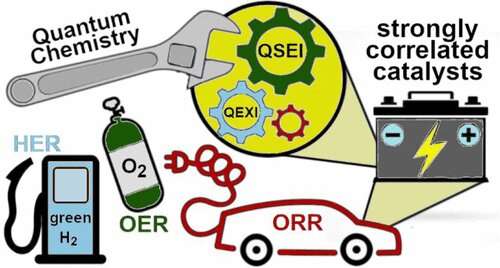Magnetism at the root of enhanced 'green' catalysis

The research group at MagnetoCat SL (Alicante, Spain) published a fundamental theoretical work on magnetism in heterogeneous catalysis in ACS Catalysis. The group, composed by Ph.D. student Miss Chiara Biz, Dr. Mauro Fianchini and Dr. Jose Gracia, laid out a complex and comprehensive theoretical treatment linking electronic spin, magnetism and heterogeneous catalysis. This treatment concerns the behavior of correlated electrons in solids and the quantum mechanical "tricks" they implement to avoid each other while balancing repulsions and attractions.
It is known that relativity and quantum mechanics enforce a quantized magnetic moment upon an electron known as spin. When many of these spins cooperate together in complex materials, several combinations and domains are possibly formed. The macroscopic resultant of these domains is trivially called magnetism.
Magnetism affects the catalytic properties of materials, according to the group at MagnetoCat.
However, the footprint of magnetism in heterogeneous catalysis has been somewhat disregarded by chemists for the longest time, so why look into it now?
The answer is simple: Because magnetism may lead to achieve "greener" and more sustainable chemistry in the years to come. The great enhancement brought by magnetism on catalysis paved the way to improved processes for hydrogen production and water splitting. Moreover, abundant magnetic metals, like iron, cobalt and nickel, may serve as an excellent replacement for heavier, rarer and more expensive metals (like platinum or gold) in catalytic structures. Environment and economy, hand in hand.
The group at MagnetoCat already made computational predictions during 2020 on the superior activity of platinum-metal alloys (where metal is iron, cobalt and nickel) compared to pure platinum in hydrogen fuel cells and they are positively sure that the experiments will soon confirm the predictions and pave the way to industrial implementation. The group is now working on the computationally-driven catalytic design of magnetic catalysts within the framework of the SPINCAT project.
More information: Chiara Biz et al, Strongly Correlated Electrons in Catalysis: Focus on Quantum Exchange, ACS Catalysis (2021). DOI: 10.1021/acscatal.1c03135
Journal information: ACS Catalysis
Provided by MagnetoCat SL




















